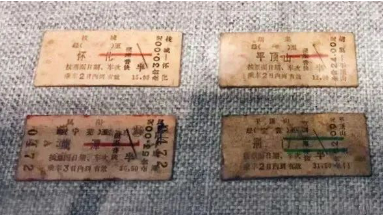Automation brings higher efficiency, safety to terminal in south China

Photo shows the fully automated terminal of Nansha port in Guangzhou, capital of south China's Guangdong province. (People's Daily Online/Liu Wei)
As a steam whistle blew at around 4:00 pm, a fully loaded cargo vessel docked at an automated terminal of the Nansha port, Guangzhou, capital of south China's Guangdong province.
Lin Jiawei, a quay crane operator, was in charge of the loading and unloading tasks. However, compared with the traditional operation model under which operators have to climb dozens of meters to get into the operation cabinet, Lin was controlling the cranes on a console hundreds of meters away from the vessel.
The terminal, as a part of the fourth phase of the modernization of the Nansha port, is the world's first full-automated terminal for river-sea-railway multimodal transport, as well as the first newly built automated terminal in the Guangdong-Hong Kong-Macao Greater Bay Area. It was put into operation on July 28, 2022.
In a control room, Lin was staring at six display screens in front of him while operating on three control panels.
"The automated terminal saves around 70 percent of human labor and significantly improves operational safety," Lin told People's Daily.
According to him, every quay crane is equipped with 26 cameras, including six panoramic ones, and these cameras capture every detail of the operation.

Intelligent guided vehicles transport containers under the orders from a smart control system at the fully automated terminal of Nansha port in Guangzhou, capital of south China's Guangdong province. (People's Daily Online/Liu Wei)
He said automated operations can avoid many oversights that often come with human labor and also make the operation more stable and safer.
The terminal includes four 100,000-ton berths and their supporting container barge berths. Employing a number of frontier technologies, such as BeiDou Satellite navigation, 5G communication, artificial intelligence, and autopilot, the terminal holds some 60 patents, including 31 invention patents.
The information system that guides the terminal's operation, which is dubbed the "super brain," is able to allocate optimal resources and generate the best routes for a number of operational scenarios, such as the loading and unloading, piling, and transferring of containers.
Lin ordered the quay crane to lift the containers on the vessel and then the containers were loaded onto intelligent guided vehicles (IGVs) assisted by the BeiDou Navigation Satellite System (BDS), which, based on smart algorithms, automatically planned their routes and sent the containers to designated locations. Later, the containers were grabbed by railroad cranes and placed on designated spots. There was no human labor during the entire process.

Intelligent guided vehicles are transporting containers. (People's Daily Online/Qiu Xinsheng)
"Workers only enter the operational area for inspection, and then the information system would stagger their routes and those of the IGVs," said Li Shupei, deputy general manager of the engineering technology department of the terminal.
According to him, most automated terminals employ magnetic nail navigation, which has high requirements on the conditions of operational areas. The ground in operational areas requires reconstruction for deploying magnetic nail navigation, which means a huge workload and high construction and maintenance costs, Li explained.
The intelligent terminal of Nansha port utilizes the BDS and laser and visual navigation technologies, which enable IGVs to run in between container piles even there's no magnetic nail on the round.
Li said the information system manages machines and vehicles very well, and no congestion happened even if they were running at full capacity.
According to him, the terminal is now as efficient as traditional ones, and will only become more efficient as its production system evolves.
Photos
Related Stories
- Satellite images of busy ports in China
- China's Beibu Gulf Port sees cargo throughput rise in 2022
- China's Tianjin Port reports container throughput of 1.73 mln TEUs in January
- North China's Ganqmod Port fully resumes functions
- Ningbo Zhoushan Port's cargo throughput ranks first globally for 14th consecutive year
Copyright © 2023 People's Daily Online. All Rights Reserved.









